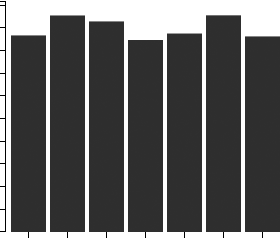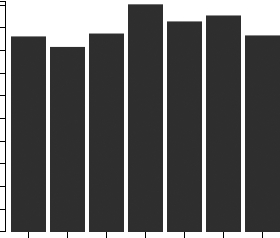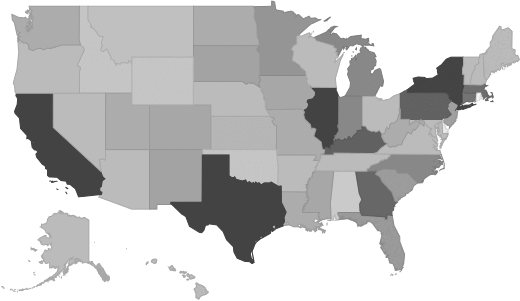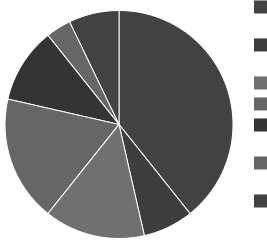Miscellaneous Manufacturing Industry - Market Research Report
Industry Overview
Industries in the Miscellaneous Manufacturing subsector make a wide range of products that cannot readily be classified in specific NAICS subsectors in manufacturing. Processes used by these establishments vary significantly, both among and within industries. For example, a variety of manufacturing processes are used in manufacturing sporting and athletic goods that include products such as tennis racquets and golf balls. The processes for these products differ from each other, and the processes differ significantly from the fabrication processes used in making dolls or toys, the melting and shaping of precious metals to make jewelry, and the bending, forming, and assembly used in making medical products. The industries in this subsector are defined by what is made rather than how it is made. Although individual establishments might be appropriately classified elsewhere in the NAICS structure, for historical continuity, these product-based industries were maintained. In most cases, no one process or material predominates for an industry. Establishments in this subsector manufacture products as diverse as medical equipment and supplies, jewelry, sporting goods, toys, and office supplies.
Source: U.S. Census BureauMarket Size and Industry Forecast
This research report analyzes the market size and trends in the Miscellaneous Manufacturing industry. It shows overall market size from 2020 to the present, and predicts industry growth through 2030. Revenues data include both public and private companies.
| Historical | Forecasted |
|---|
| 2020 | 2021 | 2022 | 2023 | 2024 | 2025 | 2026 | 2027 | 2028 | 2029 | 2030 |
|---|
| Market Size (Total Revenue) | Included in Report |
| % Growth Rate |
| Number of Companies |
| Total Employees |
| Average Revenue per Company |
| Average Employees per Company |
Source: U.S. government financial dataIndustry Revenue ($ Billions)

Industry Forecast ($ Billions)

Advanced econometric models forecast five years of industry growth based on short- and long-term trend analysis. Market size includes revenue generated from all products and services sold within the industry.
Geographic Breakdown by U.S. State
Market size by state reveals local opportunity through the number of companies located in the region. Each state's growth rate is affected by regional economic conditions. Data by state can be used to pinpoint profitable and nonprofitable locations for Miscellaneous Manufacturing companies in the United States.
Miscellaneous Manufacturing Revenue by State

Distribution by Company Size
| Company Size | All Industries | Miscellaneous Manufacturing |
|---|
| Small Business (< 5 Employees) | Included |
| Small Business (5 - 20) |
| Midsized Business (20 - 100) |
| Large Business (100 - 500) |
| Enterprise (> 500) |
Miscellaneous Manufacturing Industry Income Statement (Average Financial Metrics)
Financial statement analysis determines averages for the following industry forces:
- Cost of goods sold
- Compensation of officers
- Salaries and wages
- Employee benefit programs
- Rent paid
- Advertising and marketing budgets
The report includes a traditional income statement from an "average" company (both public and private companies are included).
| Industry Average | Percent of Sales |
|---|
| Total Revenue | Included |
| Operating Revenue |
| Cost of Goods Sold (COGS) |
| Gross Profit |
| Operating Expenses |
| Operating Income |
| Non-Operating Income |
| Earnings Before Interest and Taxes (EBIT) |
| Interest Expense |
| Earnings Before Taxes |
| Income Tax |
| Net Profit |
Average Income Statement

Cost of Goods Sold
Salaries, Wages, and Benefits
Rent
Advertising
Depreciation and Amortization
Officer Compensation
Net Income
Financial Ratio Analysis
Financial ratios allow a company's performance to be compared against that of its peers.
| Financial Ratio | Industry Average |
|---|
| Profitability Ratios | Included |
| Profit Margin |
| ROE |
| ROA |
| Liquidity Ratios |
| Current Ratio |
| Quick Ratio |
| Activity Ratios |
| Average Collection Period |
| Asset Turnover Ratio |
| Receivables Turnover Ratio |
| Inventory Conversion Ratio |
Salary information for employees working in the Miscellaneous Manufacturing industry.
| Title | Percent of Workforce | Bottom Quartile | Average (Median) Salary | Upper Quartile |
|---|
| Management Occupations | 7% | Included |
| Chief Executives | 0% |
| General and Operations Managers | 2% |
| Architecture and Engineering Occupations | 6% |
| Engineers | 6% |
| Sales and Related Occupations | 6% |
| Office and Administrative Support Occupations | 13% |
| Production Occupations | 51% |
| Assemblers and Fabricators | 16% |
| Miscellaneous Assemblers and Fabricators | 14% |
| Assemblers and Fabricators, All Other, Including Team Assemblers | 13% |
| Metal Workers and Plastic Workers | 11% |
| Other Production Occupations | 19% |
| Jewelers and Precious Stone and Metal Workers | 29% |
| Jewelers and Precious Stone and Metal Workers | 29% |
| Medical, Dental, and Ophthalmic Laboratory Technicians | 8% |
| Dental Laboratory Technicians | 9% |
| Miscellaneous Production Workers | 5% |
Government Contracts
The federal government spent an annual total of
$3,161,906,270 on the miscellaneous manufacturing industry. It has awarded 139,034 contracts to 7,897 companies, with an average value of $400,393 per company.
Top Companies in Miscellaneous Manufacturing and Adjacent Industries
| Company | Address | Revenue
($ Millions) |
|---|
Included |



